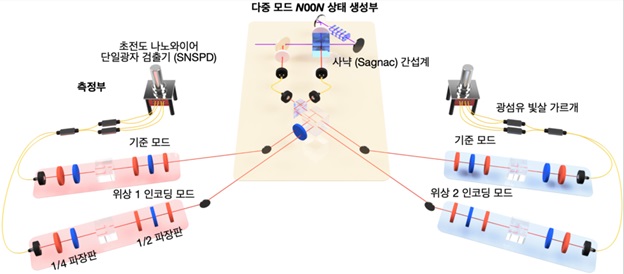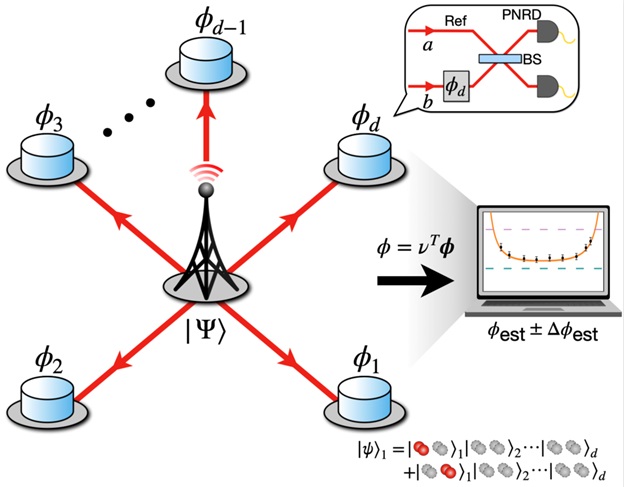Accurate measurement underpins advanced science and technology, from bioimaging and semiconductor defect diagnostics to deep-space telescope observations. Yet conventional sensing technologies have long faced a barrier known as the Standard Quantum Limit (SQL)—a fundamental restriction on measurement precision. A promising alternative is the distributed quantum sensor, which links multiple sensors across distances into a single large-scale quantum system, enabling simultaneous high-precision measurements.
While previous research has focused primarily on improving measurement precision, its potential for high-resolution imaging had not been fully validated.
Now, a research team led by Dr. Hyang-Tag Lim at the Center for Quantum Technology of the Korea Institute of Science and Technology has achieved a world-first breakthrough. By applying a special quantum entangled state known as the multi-mode N00N state to distributed sensors, the team demonstrated a quantum sensing network capable of enhancing both precision and resolution simultaneously.
Earlier distributed quantum sensor studies often relied on single-photon entanglement, which improved precision but struggled to distinguish interference patterns critical for high-resolution measurement. In contrast, the multi-mode N00N state entangles multiple photons across specific paths, producing much finer interference fringes. This enables not only sharper resolution but also heightened sensitivity to minute physical changes.
The new technique brings measurement performance close to the Heisenberg Limit, the ultimate bound of quantum precision, while opening the door to ultra-high-resolution imaging applications. With the U.S. and Europe investing heavily in quantum sensors as next-generation strategic technologies, the breakthrough signals Korea’s potential to secure international competitiveness in this critical field.

In experiments, the KIST team generated a two-photon, four-path multi-mode N00N state and used it to simultaneously measure two distinct phase values. The results showed an 88% improvement in precision (2.74 dB gain) compared to conventional approaches, experimentally verifying performance near the Heisenberg Limit for the first time.
The achievement holds broad implications for a wide range of fields that demand extreme precision. In the life sciences, it enables the imaging of sub-cellular structures that are invisible to conventional microscopes. In the semiconductor industry, the technology allows for the detection of circuit defects at the nanometer scale. In astronomy, the breakthrough makes it possible to reveal detailed structures of distant celestial bodies that previously appeared blurred in traditional telescope images.
“This result marks an important turning point in proving the feasibility of practical quantum sensor networks based on quantum entanglement,” said Dr. Lim. “If combined with silicon photonics-based quantum chip technologies, this approach could one day extend to applications in everyday life.”
The research was supported by the Ministry of Science and ICT, KIST’s projects, and the IITP’s Quantum Sensor Commercialization R&D Program. The findings were published on July 1 in the international journal Physical Review Letters under the title “Distributed Quantum Sensing with Multi-Mode N00N States.”


